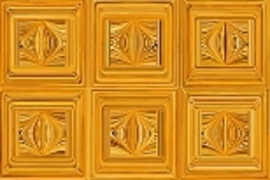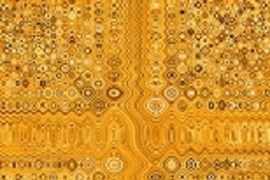CAMBRIDGE, Mass.--The winning images in MIT's first annual "Weird Fields" contest are not only beautiful but also educational, helping their creators understand the abstract phenomena they're learning about in the course from which the contest originated.
What's more, students from around the world can also learn from this approach, since the course materials -- and the computer program involved in the contest -- are available free through MIT's OpenCourseWare initiative.
It's easy to directly experience and therefore get a rough understanding of gravity -- we've all dropped things -- but what about electromagnetic forces? They're just as important. "The material object presenting this text does not fall through the floor to the center of the Earth because it is floating on (and held together by) electrostatic force fields," says the overview for 8.02, or Electromagnetism I. "Electromagnetic forces quite literally dominate our everyday experience ...However, we are unaware of this in a visceral way, in large part because [they] are enormously stronger than gravity."
In addition, the vectors, or flow fields, that physicists use to describe these forces are very abstract. Picture the jet stream as shown on a weather map complete with the abundant little arrows. At every point, the jet stream has velocities in a different direction. The arrows represent those different directions, or wind vectors.
"The same is true for electromagnetism," said Professor of Physics John Belcher, who teaches 8.02. But how do you share those concepts with students? "They have trouble visualizing what vector fields look like," he said.
So Belcher and colleagues at the MIT Center for Educational Computer Initiatives developed a computer applet into which students put the mathematical expressions that describe a given field. "It then pops out what the field will look like," he said.
Enter the "Weird Fields" contest, which encourages students to explore vectors by playing with the applet. "It allows them to construct fields themselves and get some feeling for why they look like they do," Belcher said.
The winner, Nicki Lehrer, and runner-up David Rush will receive framed color reproductions of their "weird fields."









